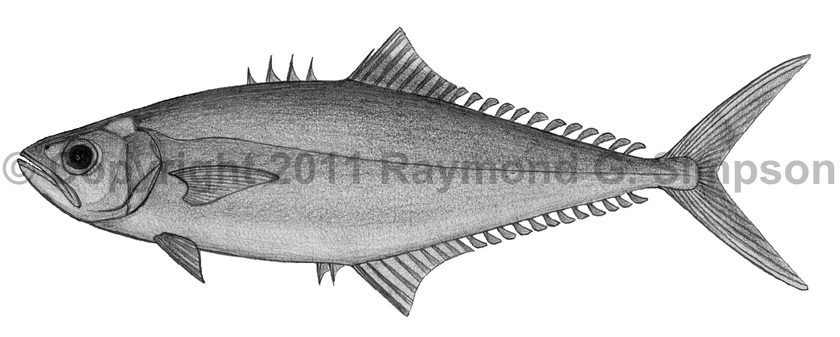
Common Name
Maracaibo Leatherjacket
Year Described
Cuvier & Valenciennes, 1832
Identification
Dorsal Fin: 4 spines (rarely 5) in first lobe, followed by I, 20-21 (posterior 11-15 rays are individual finlets)
Anal Fin: 2 spines separate from rest, followed by I, 19-20 (posterior 11-15 rays are individual finlets)
Pelvic Fin: I, 5
Gill Rakers: 3-6 upper, 11-14 lower; 14-20 total
Vertebrae: 10 precaudal, 16 caudal
Elongate, ovoid, and compressed, with a small head and small eye (3.6-4.0 times in HL). Forehead slightly concave in profile, lower head more convex. Jaw non-protractile at snout tip, reaches beyond the posterior margin of eye. Teeth small, with one row in upper jaw and two in lower jaw. Pectoral fins shorter than head. Second dorsal and anal fins with raised anterior lobes. Tail deeply forked. Lateral line with small curve above pectoral fin and straight along rest of length without scutes. Scales needle-like and embedded in skin. Caudal keels and grooves absent.
Color
Bright silvery, slightly darkening dorsally. Dorsal fin spines dusky with clear membranes. Second dorsal, pectoral, and anal fins clear. Tail dusky to pale yellowish with a clear posterior margin. Juveniles with a contrasting mottled or unformly dark coloration depending on substrate.
Size
Common to 28cm. Maximum size to 43cm.
Habitat
Adults often found in fresh and brackish waters, returning to the sea to spawn. In saltwater, found from 18-45m over soft bottoms.
Range
Continental from Guatemala to SE Brazil.
References
Smith-Vaniz, W.F. 2003. Carangidae (pp 1426-1468). In: Carpenter. 2003. The living marine resources of the Western Central Atlantic v. 3.